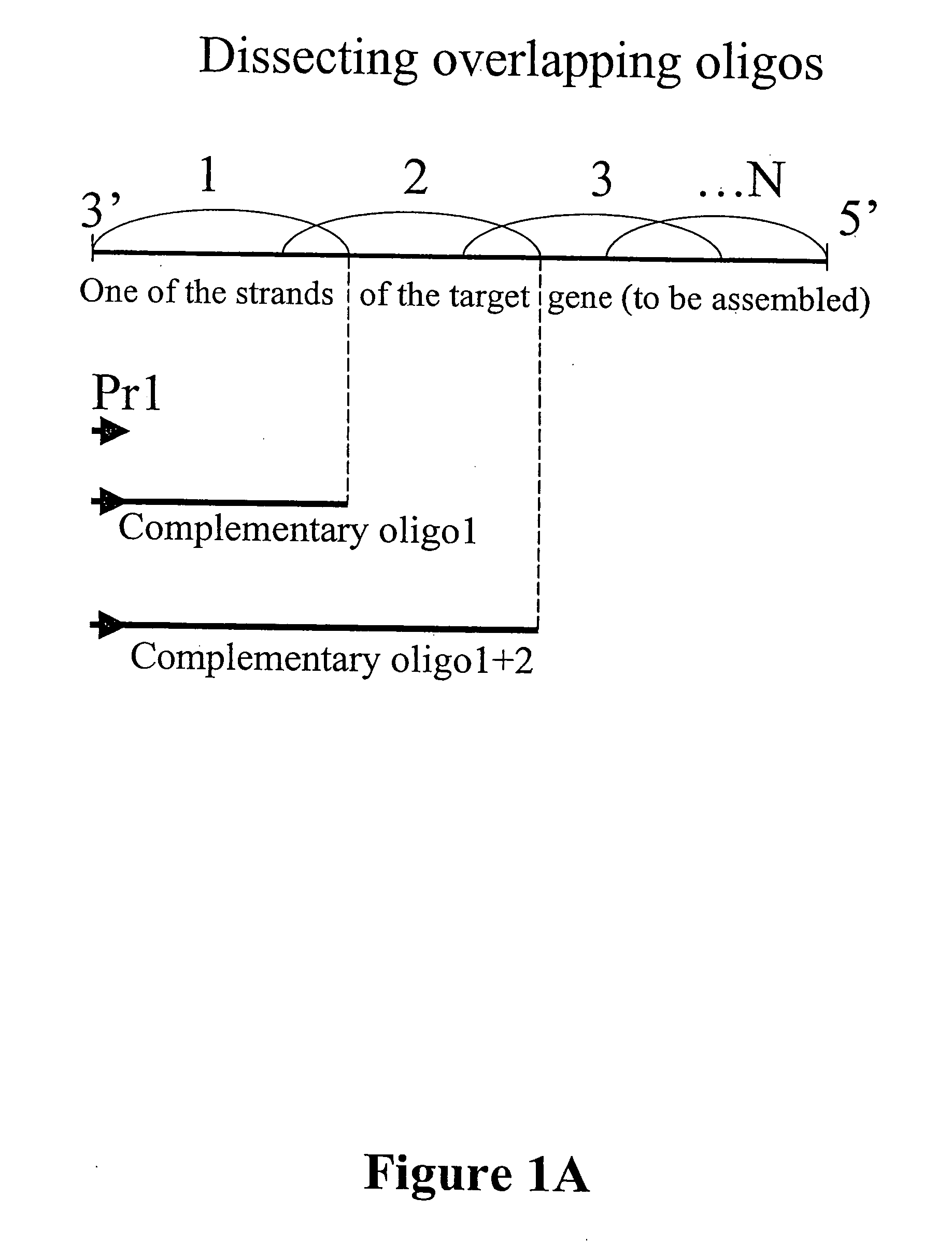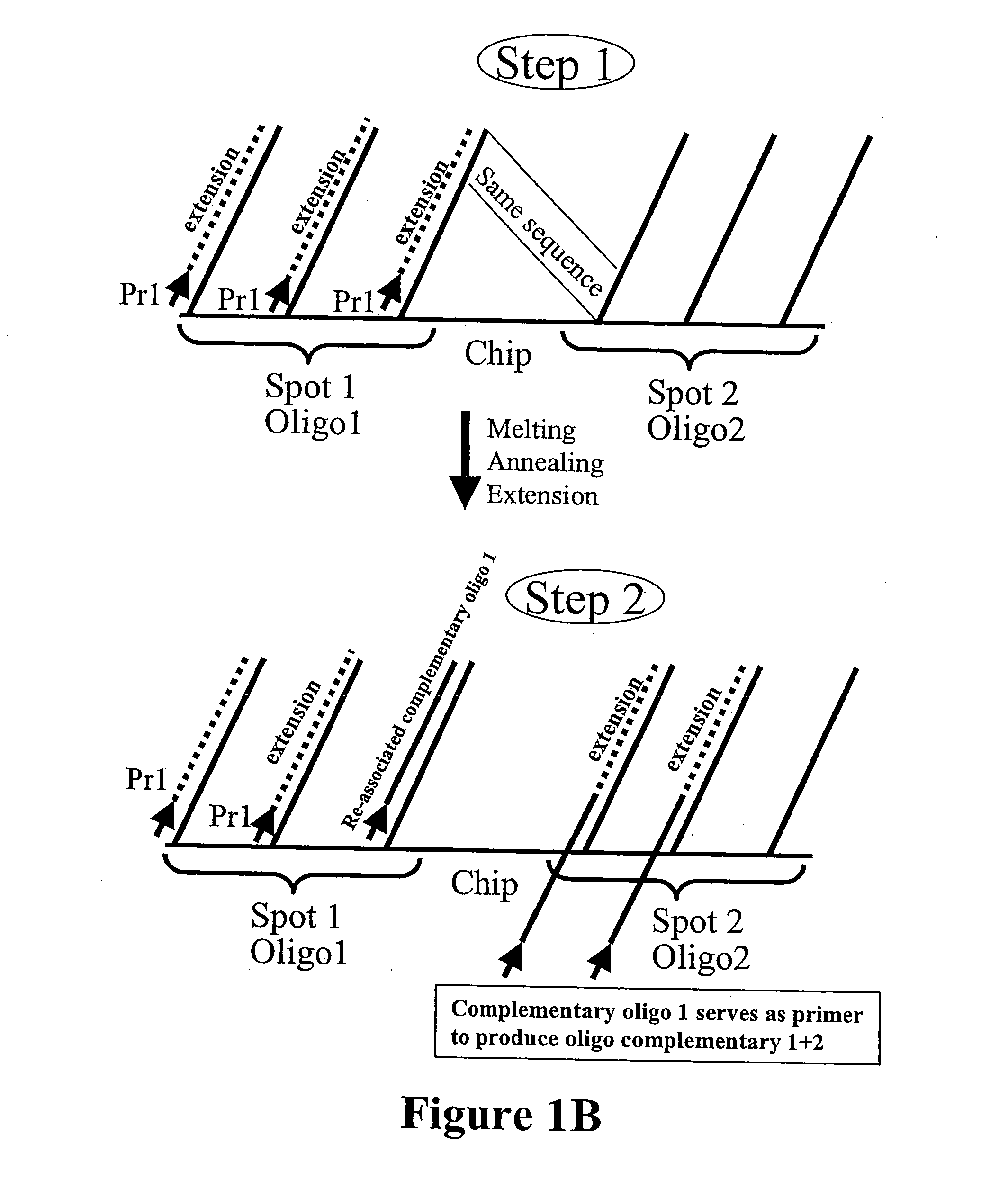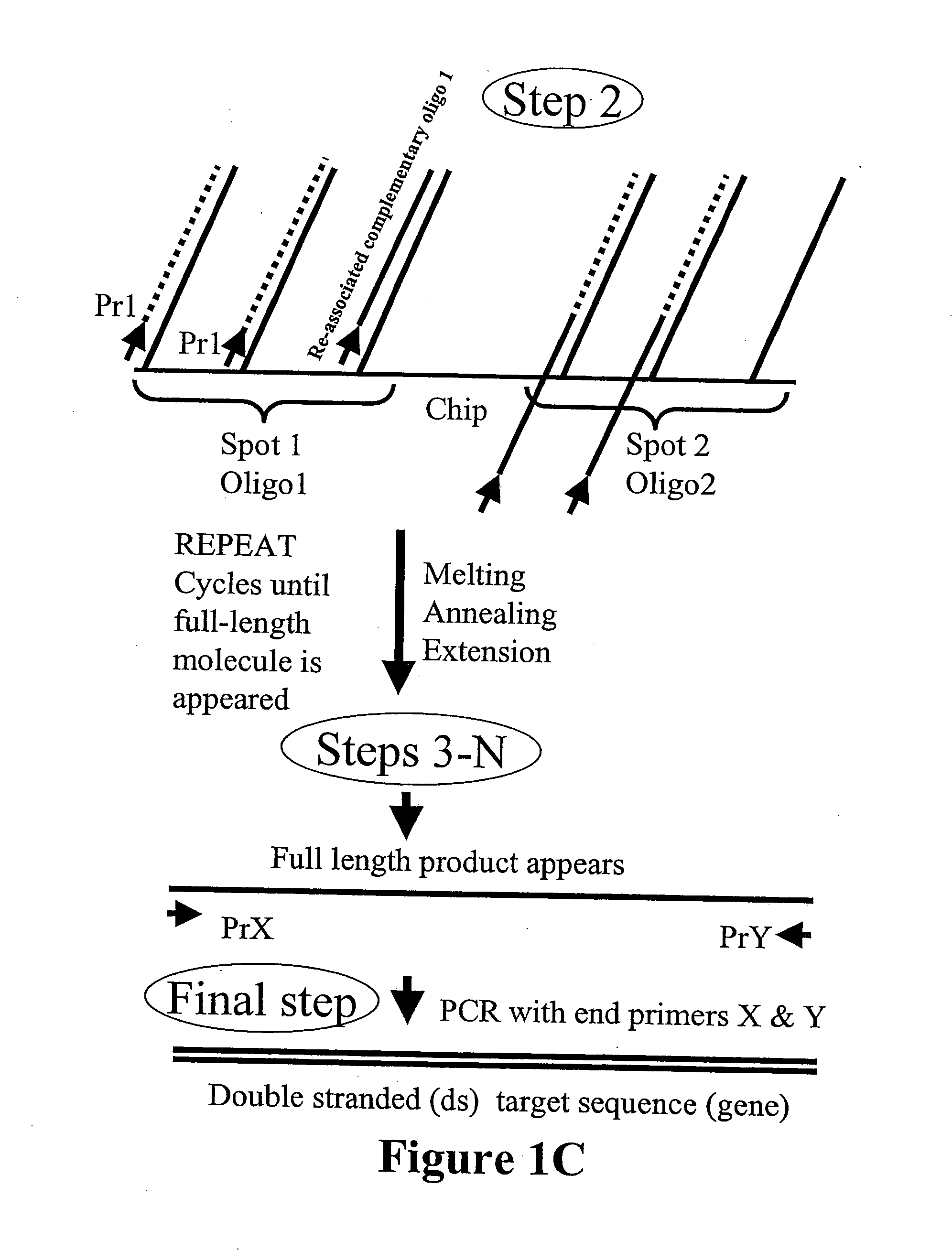Microarray synthesis and assembly of gene-length polynucleotides
a gene-length polynucleotide and microarray technology, applied in the field of in vitro synthesis and assembly of long, gene-length polynucleotides, can solve the problems of inability to synthesis oligonucleotides (given, phosphoramidite chemistry) and practical impossibility beyond 150 bases and certainly longer than 250 bases
- Summary
- Abstract
- Description
- Claims
- Application Information
AI Technical Summary
Benefits of technology
Problems solved by technology
Method used
Image
Examples
example 1
[0077] This example illustrates assembly of 172-mer polynucleotide sequence from non-cleavable oligonucleotide sequences synthesized on a microarray device according to the first embodiment inventive process (FIGS. 4 and 5). Three oligonucleotides (sequences shown in FIG. 5) were synthesized in situ on a microarray device according to an electrochemical process (see U.S. Pat. No. 6,093,302, the disclosure of which is incorporated by reference herein). The oligonucleotide sequences synthesized were amplified by a PCR reaction with primers X (complementary to the strand of oligo#1) and Z (same strand as oligo#3) (FIG. 5). After 45 cycles of PCR using a PCR kit with AmplyGold® enzyme (Applied Biosystems) a correct DNA fragment of 172 bp was synthesized (FIG. 4). Its subsequent digestion confirmed the specificity of this enzyme with HpaII producing two fragments of 106 bp and 68 bp.
example 2
[0078] This example illustrates the second embodiment of the inventive process for preparing oligonucleotides for assembly into full-length polynucleotides by PCR and REII (restriction enzyme) digestion. A single oligonucleotide sequence was synthesized on a microarray device according to the procedure in Example 1 (see FIGS. 2 and 6). The oligonucleotide sequence further comprised 2 flanking sequences, each having a recognition site for a MlyI restriction enzyme. This microarray device was subject to a PCR (25 cycles) reaction with two primers (shown in FIG. 7) to produce an amplified PCR fragment mixture. The amplified PCR fragment obtained was digested by MlyI restriction enzyme and purified by a PCR purification kit (Qiagen) to produce specific oligonucleotides ready for assembly (FIG. 7). Similarly, this specific oligonucleotide was purified from the flanking sequences by absorption of the digestion mixture by Streptavidin-agarose (Sigma).
example 3
[0079] This example illustrates the assembly of a 290 bp polynucleotide sequence from 9 oligonucleotide sequences, each having flanking sequences containing a MlyI restriction site. Each of the nine different oligonucleotide sequences was synthesized on a microarray device through an in situ electrochemistry process as described in example 1 herein.
[0080] The microarray device containing the nine specific oligonucleotide sequences (with flanking sequences as shown in FIG. 8) was used for PCR amplification of each oligonucleotide sequence using two primers, Primer 1 and 2, described in FIG. 6 to form a mixture of ds oligonucleotide sequences. The primers were complementary to the flanking sequences. The mixture of the amplified ds oligonucleotide sequences was digested by MlyI enzyme. Specific ds oligonucleotide sequences were purified and then assembled into the final 290 bp polynucleotide sequence in two steps as described in FIG. 2 and shown schematically in FIG. 9. At the first ...
PUM
| Property | Measurement | Unit |
|---|---|---|
| length | aaaaa | aaaaa |
| soluble | aaaaa | aaaaa |
| chemical composition | aaaaa | aaaaa |
Abstract
Description
Claims
Application Information
 Login to View More
Login to View More - R&D
- Intellectual Property
- Life Sciences
- Materials
- Tech Scout
- Unparalleled Data Quality
- Higher Quality Content
- 60% Fewer Hallucinations
Browse by: Latest US Patents, China's latest patents, Technical Efficacy Thesaurus, Application Domain, Technology Topic, Popular Technical Reports.
© 2025 PatSnap. All rights reserved.Legal|Privacy policy|Modern Slavery Act Transparency Statement|Sitemap|About US| Contact US: help@patsnap.com



